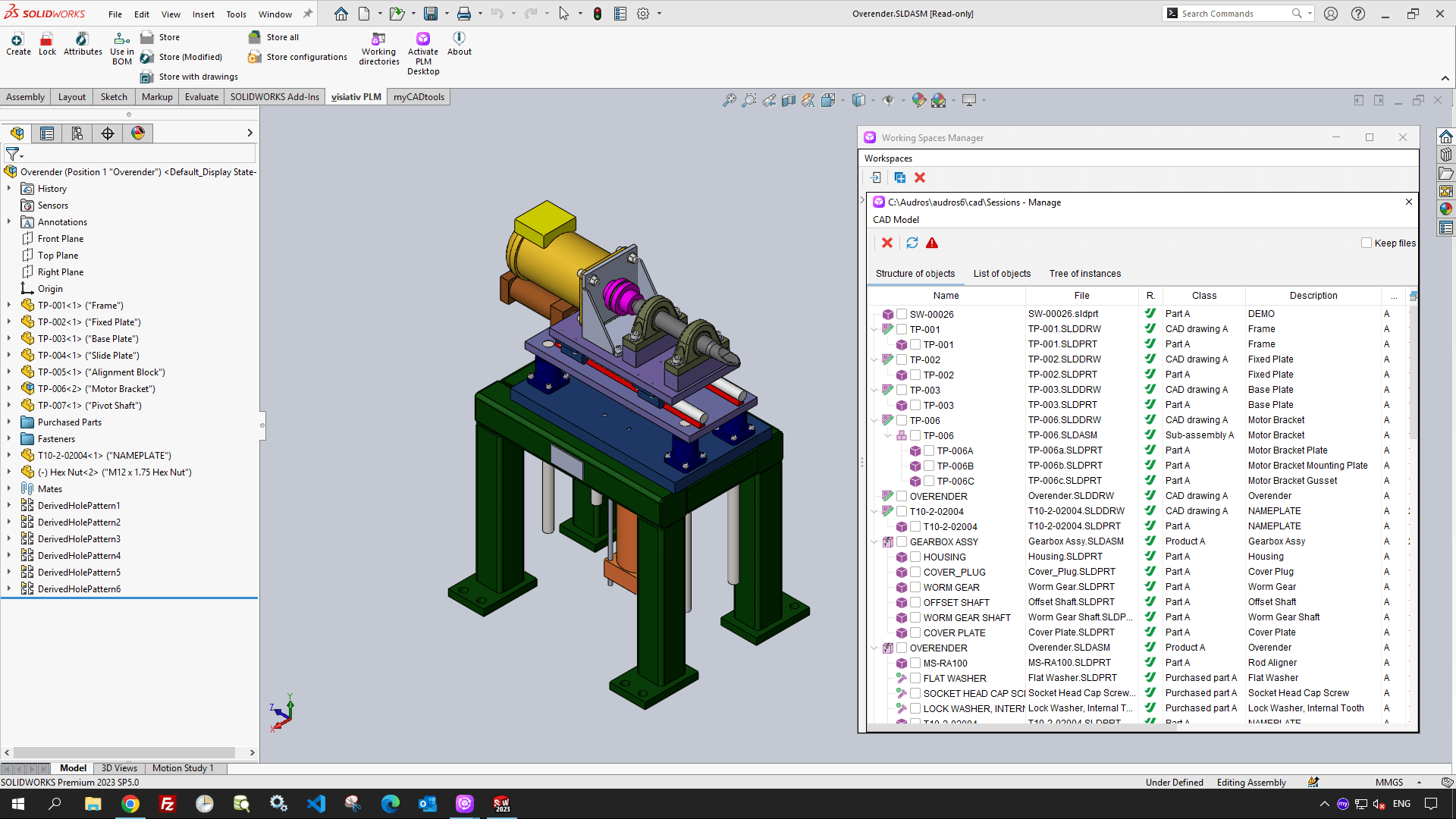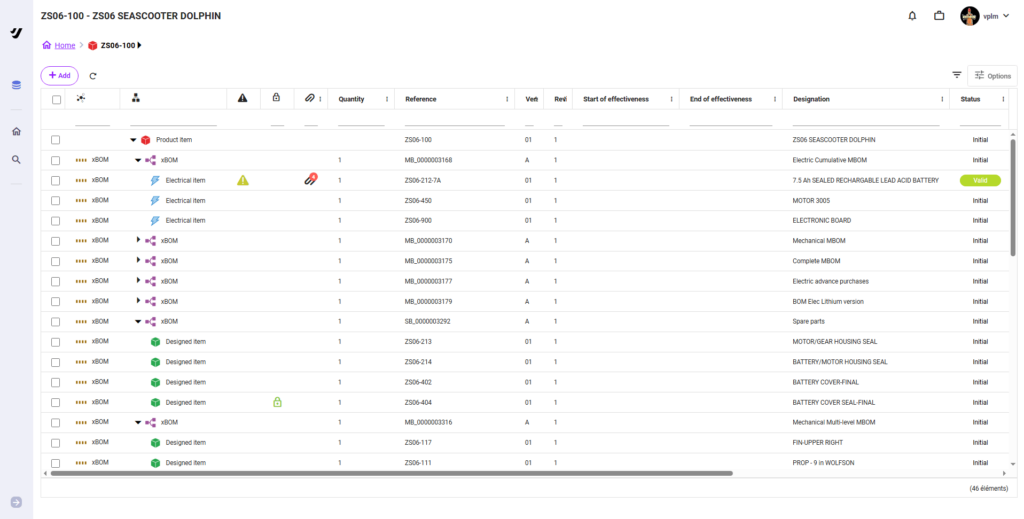Product Lifecycle Management: Improve your R&D process efficiency with PLM
07 April 2025
Product Lifecycle Management, or ‘PLM’, is the process of managing the various activities and data critical to the success of product. From inception, development, production, to retirement and disposal, PLM encompasses the people & departments in a typical design or manufacturing business. You may already be doing PLM. It could be with manual processes and with discrete disconnected tools, but if you design, make, and sell a physical product, you are doing PLM.
The Product Lifecycle
Every physical product we buy and use come to us following several stages of initial, and then ongoing, effort, namely:
- Idea Creation & Innovation
- Design & Testing
- Manufacture
- Delivery & Selling
- Service and Maintenance

Product Lifecycle
But even in its use, the life of the product carries on. Some products we use may need maintenance or even replacement parts to keep the product going. For example, replacement blades for a lawnmower or servicing instructions for a vacuum cleaner.
Processes manage its retirement and disposal after the product becomes obsolete. The Service and Disposal stages of many products can span more years than all the proceeding stages combined. People often overlook the resources required to manage them efficiently.
Getting a product to market will have its challenges. Understanding the product lifecycle and the associated processes is key to efficiently managing your products introduction and its later evolutions.
Feedback during the various design/testing/manufacturing stages will mean there will be inevitable changes to the product. Including customer feedback, product will evolve. This change improves the design, manufacture, or end-user experience of the product.
The stages listed above are not necessarily discrete and neatly compartmentalised. There will always be some overlap, and some activities can happen in parallel. However, they all do tend to happen. The above stages serve two major business-wide processes for product development and evolution:
- New Product Introduction (NPI) – The process of taking a product idea from concept to design and validation, to full production and market launch.

- Engineering Change Management (ECM) – The process of managing changes to products, including reviewing and approving change requests, executing change orders, and broadcasting change notices.
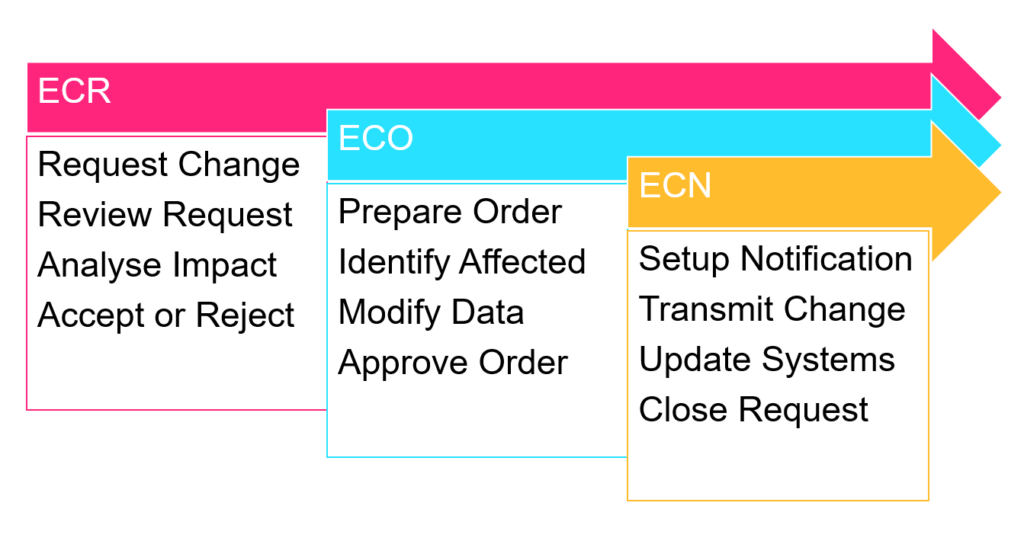
Products, Processes, People
A product manufacturer can break down the product lifecycle into some, if not all, of the stages mentioned above. They must control and monitor these stages to ensure the product meets technical requirements and is delivered on time. It’s probably fair to say that there are three main phases of a products life within the control of the manufacturer. The three phases are:
- Research, Development, and Detailed Design
- Production, Manufacturing, Delivery
- In-use Service, Maintenance, End-of-Life
In each of the three phases, great efficiencies can be gained from Product Lifecycle Management systems that:
- Help centralise, control, and co-ordinate the data needed to define the product,
- Help control the processes pertinent to the phase,
- Help the people collaborate on the product definition, manufacture, and service the product.
The rest of this article will focus on the Research & Development (R&D) phase of the product lifecycle.
What are the Product Lifecycle stages in R&D?
- Conceptualisation – This includes market analysis, gathering requirements, checking regulatory compliance, defining product systems (mechanical, electrical, software), defining technical requirements, planning, concept design, plus reviewing all the above.
- Design & Engineering – This includes moving the concept design to detailed design, documenting the definition in Computer Aided Design (CAD) systems (mechanical, electrical, etc.), iterating the design based on prototyping and testing (physical and virtual) to meet technical requirements, design reviews, and defining the product’s structure or Engineering Bill of Materials (eBOM).
- Industrialisation – This includes defining additional Bills of Materials using the eBOM to suit Manufacturing (mBOM) or Servicing (sBOM) etc., the sourcing of materials and parts from the supply chain, regulatory testing and certification, and defining how the product will be made.
PLM is a Process
As you see, the process of managing the product lifecycle is critical to a successful product. Product Lifecycle Management is a process that encompasses the various stage-specific or activity-specific processes. If you design, make, and sell a product, you are already ‘doing PLM’. If you are using manual processes and discrete disconnected tools, you have room for greater efficiency.
So, if you’re already doing PLM in some form, what’s the issue? Let’s start with manual processes. The manual nature of certain processes, such as CAD file management or Document management, may have come out of doing file-based activities the best way with limited time, skills, or lack of tools. However, manual processes will always have the potential to introduce errors and take more time than if they were automated.
A process may span multiple stages and phases. It’s possible that a single process will be carried out with various disconnected tools. By having a process split across different disconnected tools, there is no single place to search or audit the process.
How can a PLM system help the PLM process?
Let’s look at five key areas a PLM system can help in the PLM process.
Data Storage & Centralisation
Today, your product data and files might be spread across multiple disconnected ‘silos’. These could be in departmental server folders or other systems. Having multiple locations, with the possibility of file duplication (easily done in server folders) will make it slow to find the right data. Plus, it would be difficult see how its related to each other in the context of the product. All this leads to valuable time being wasted in looking for information.
A PLM system can help increase efficiency by:
- Centralising all product data and files in a single searchable location.
- Disallowing the duplication of data (single version of the truth).
- Indexing the data, files, and relationships for quicker searches.

Visiativ PLM for Centralised Data
Product Data Management
Centralising the storage of product files is important, but just as important is the management of the attributes or meta-data (data about the data) related to the product (and its components). Examples of meta-data are Part or Document Number and Revision. This also includes the management of the product’s approval processes and its meta-data such as Approver Names, Approval Dates. Let’s not forget the document or component Lifecycle States (e.g., Work in Progress, Released). Today, this may be a manual process of entering the meta-data values in the product documents and design files or manually updating drawing/document register spreadsheets with approval and lifecycle data. Also, the design approvals could be being done manually by sending emails back & forth.
All this manual data entry and manual routing of files for approval can introduce human error such as typos or missing information. Approval emails could easily get missed or not include the right people or attachments for review. The attachments themselves may be subject to size limitations and introduce more duplication. Plus, with separate drawing/document registers, people can’t see live design lifecycle data without using another tool or system.
This all adds up to wasted time and potential for errors in manually keeping lifecycle meta-data up to date. Plus, time wasted adding/removing people and attachments to email chains during the approval process. Additionally, the approval email would need to be stored for audit purposes.
A PLM system can help remove manual work and increase productivity by:
- Automating the generation of key meta-data such as Part Number and Revision.
- Providing tools for the approval of data in a digital process with multiple people without the need for file copies.
- Automatically updating key approval information (e.g., Approved by, Approved Date) with a full audit trail.
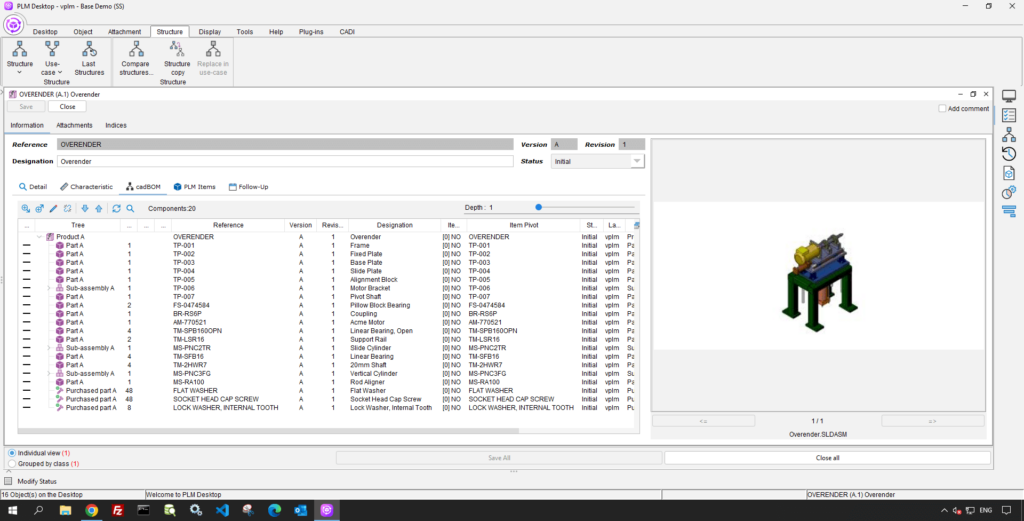
Visiativ PLM for CAD Data Management
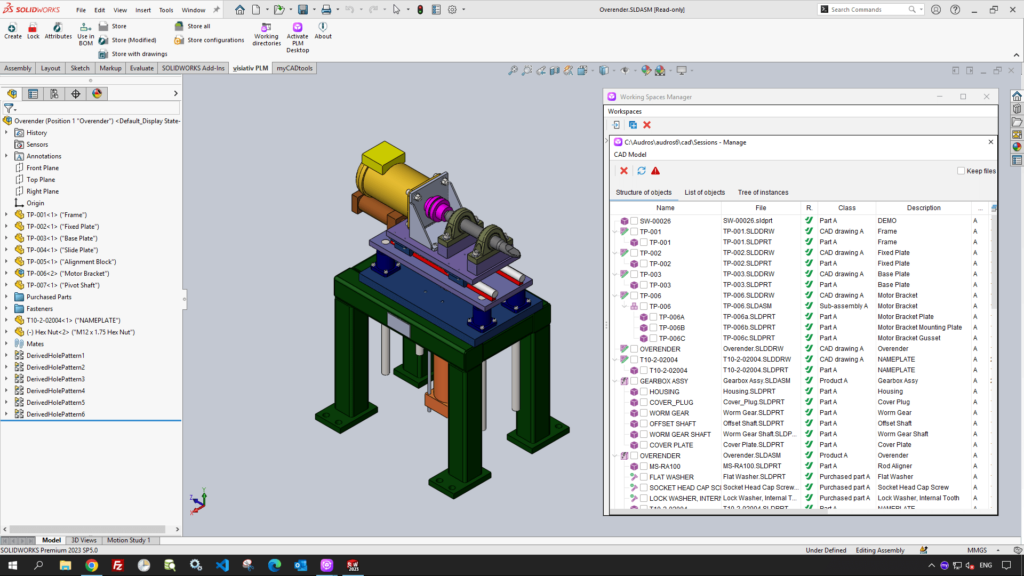
Visiativ PLM SOLIDWORKS CAD Integration
Engineering Change Management
Teams report product issues or Change Requests through multiple channels and capture them in various systems. Whether generated internally or externally, these requests often don’t reside where the product data is managed. Searching through multiple places for product issues or change requests could be time-consuming. More time is added if the requests are not directly linked to the product data for context. Validating issues and change requests in a disconnected way could lead to longer times to remedy product quality issues.
A PLM system could help improve decision-making, reduce the time to fix product issues, and improve product quality by:
- Bringing together all product-related data and change processes into one place.
- Providing change process tools to digitally capture issues linked to the product data.
- Speeding up the analysis and validation of change requests via templated tasks and actions.
- Improving the execution of change orders by structuring component additions or revisions to the product.
- Improve communication by automating change notifications to all stakeholders.
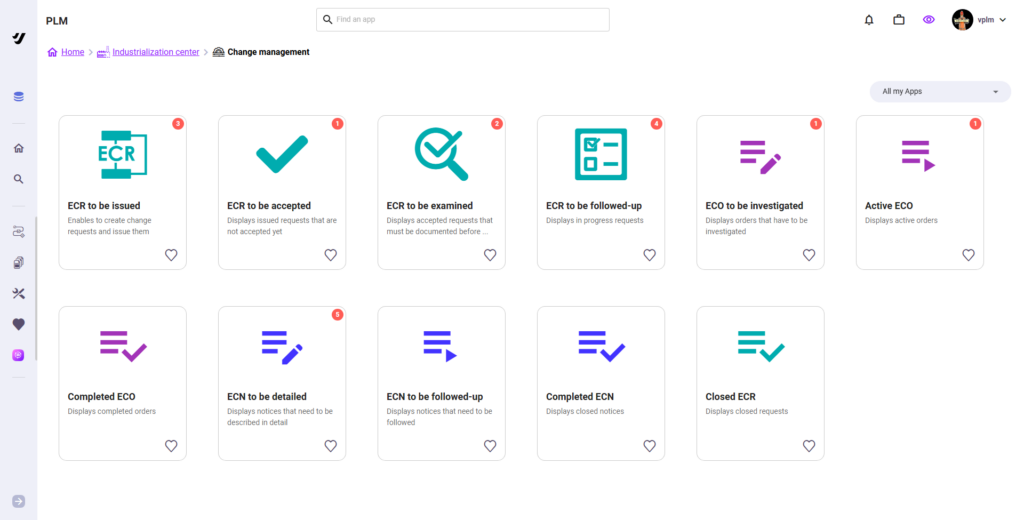
Visiativ PLM for Engineering Change Management
Project Management
For R&D, working to a plan is critical. R&D teams use project planning apps or spreadsheets to manage their work. They manually assign tasks to project team members through emails or calendar invites. Although digital tools are employed, updating the plan as tasks are completed remains a highly manual process. This complexity increases when teams have to maintain an up-to-date report or dashboard of the project status. Moreover, using emails or calendar invites disconnects project deliverables, like documents or CAD data, from the project plan. Considering the above, R&D project management becomes potentially time consuming to plan, update, and report on for design activities. This can lead to delays and getting accurate project statuses becomes error prone.
A PLM system can help increase the efficiency in managing R&D projects by:
- Incorporating the project planning tools into the same system that manages the product data.
- Connecting the project tasks to people developing the product and project deliverables.
- Automatically collecting project status information for quicker reporting as the tasks are progressed.
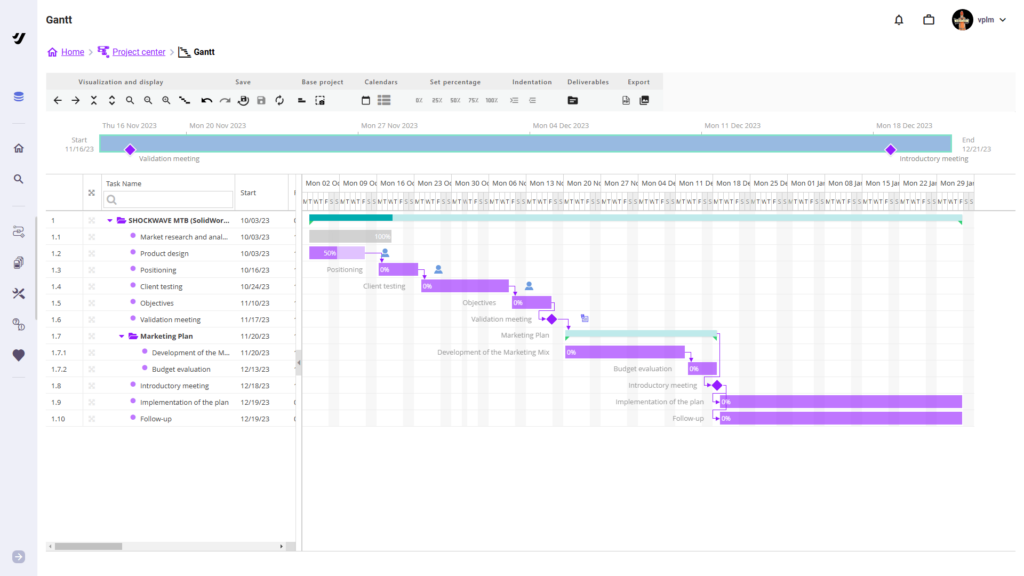
Visiativ PLM Project Gantt
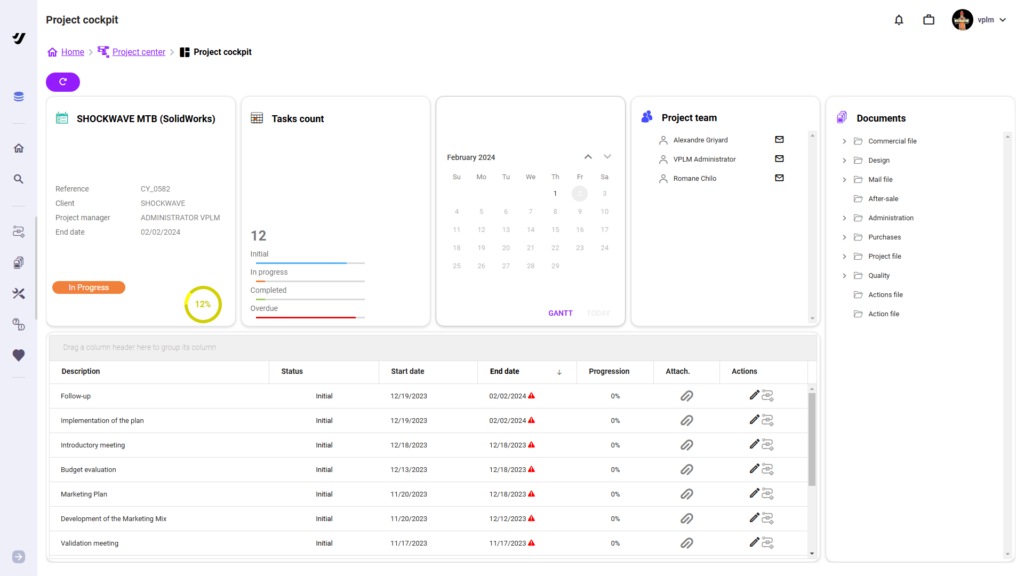
Visiativ PLM Project Dashboard
Bills of Materials Management
Many businesses still document their full Product Structures by manually creating line items in spreadsheets. The reason given is that usually an Engineering BOM (eBOM) needs to contain items that are not just Mechanical, but also Electrical, or Software. The eBOM may also need to contain materials such as Lubricants and Adhesives. In these cases, a 3D CAD assembly structure won’t be enough to represent the eBOM. Separately, Manufacturing may be using the spreadsheet-based eBOM as a basis to develop the mBOM. Similarly, the Service department for the sBOM.
The manual creation of eBOMs using spreadsheets can be slow and prone to data entry errors. This is especially true when the data is coming from various sources. The eBOM spreadsheet could be immediately out of date due to rapid product development. This then requires the eBOM to be constantly manually updated. The downstream mBOM and sBOM would also need to be updated and synchronised manually.
Manually creating the eBOM consumes a lot of time, and users might fail to spot data entry errors and out-of-date data. This oversight results in ordering the wrong parts or producing out-of-date part revisions, which wastes both time and money on rectification
A PLM system can help reduce the risk of working to the wrong information by:
- Using Items to represent the various types of components (physical or not) that make up the product/eBOM.
- Linking the CAD and other data to Items that combine to define the structured eBOM.
- Keeping the eBOM synchronized and up to date as changes occur to the product design.
- Keeping downstream BOM types (mBOM, sBOM) synchronized to changes in the eBOM by authoring them in the same system.
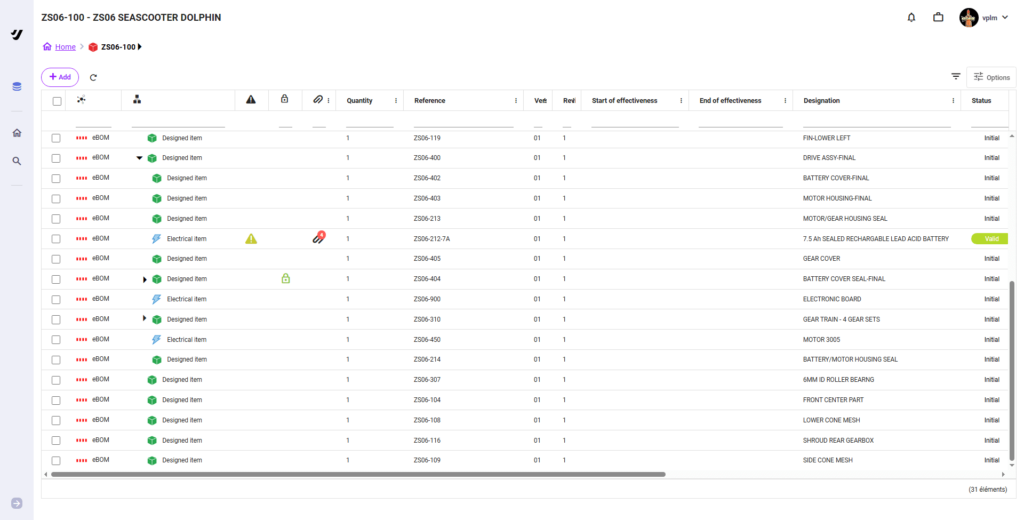
Visiativ PLM eBOM
How can Visiativ help with PLM?
You may have recognised some of what was described above. Your current R&D practices and processes around data and product lifecycle management may be manual and time-consuming.
Visiativ have decades of industry knowledge around Product Lifecycle Management and its various sub-sets and processes. Visiativ helps businesses improve R&D efficiency, compliance, and productivity, whether they focus on Product Data Management or broader PLM. With our PLM expertise, we’ll work with you to enhance your Product Lifecycle Management.
Contact Visiativ Solutions UK to see how we can help with your PLM process.
 |
About the author: This post was written by Visiativ Products Manager, Simon Dass. Simon has been implementing PDM and PLM systems since 2006. |
|---|


